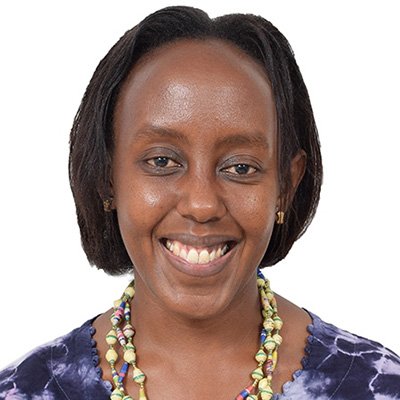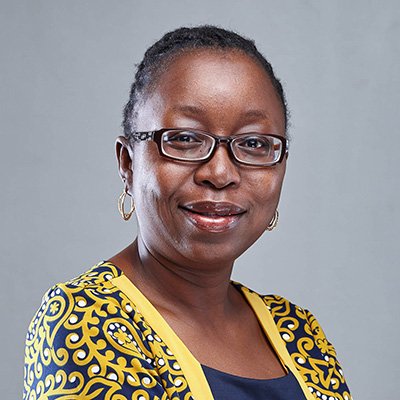Lessons from successful practices in education in Africa during the COVID-19 pandemic

The COVID-19 pandemic’s impact on learning cannot be overstated or accurately quantified due to inadequate metrics. The pandemic hit the African continent between late February and early March 2020. The school calendar’s first term was winding down in the eastern part of the continent: specifically, Kenya. Some students had just joined secondary school and were slowly adapting to the new learning environment. The school year was under way, and key extracurricular activities were in top gear, among them sporting activities and drama festivals. Further west, in Nigeria, schools were in the second half of their school year, which kicked off in early January with various activities scheduled to take place. The abruptness and urgency of the pandemic put stakeholders on a steep learning curve that required collaboration and demanded innovative responses and flexibility in adapting new approaches with the existing systems and policies in mind.
This blog post provides an overview of evidence-based successful practices from Global Partnership for Education (GPE)’s partner countries, under the KIX Observatory on COVID-19 Responses in Educational Systems in Africa, gathered from seven countries - Burkina Faso, Kenya, Malawi, Mali, Mozambique, Niger, and Nigeria - through a case study research approach. The learnings can provide decision makers, including curriculum experts, officials from the ministries of education, as well as health and planning officials, and researchers, with strategies that can be replicated to enhance learning continuity and learner well-being during crises and non-crisis periods. The complete findings are documented in the full report, titled "Report of Case Studies on Responses to the COVID-19 Pandemic in Africa’s Educational Systems". The successful practices were incorporated into the responses to the COVID-19 pandemic to ensure learning continuity.
The successful practices fall under the two broad themes: (a) operations of educational systems, including teacher training and school reopening; and (b) overall learner well-being, including offering nutrition, addressing sexual and gender-based violence, and providing support for displaced persons.
Operations of educational systems
Teacher training: In Kenya and Niger, the government liaised with different educational agencies to train teachers on using novel approaches that were either seldom used or not incorporated pre-pandemic. For instance, in Kenya, multi-stakeholder collaboration involving the Ministry of Education, the Centre for Mathematics, Science and Technology Education in Africa, and the Kenya Institute of Curriculum Development facilitated the implementation of the online teacher professional development. Furthermore, teachers received training on online teaching platforms such as Google Classroom to reach students remotely. Comparatively, teachers in Niger received pedagogical training on teaching at the right level. The countries leveraged existing structures and frameworks, providing a launch pad for recovery and continued learning. Also, creative options such as using community learning centers pooled the limited available resources and provided more learners with educational opportunities. In both countries, innovative techniques such as the train-the-trainer framework and the use of low-tech alternatives such as radio and television increased the implementation reach.
School reopening: In Malawi, the government used back-to-school campaigns to ensure learners received information on returning to school following school closures and to facilitate safe school reopening. Creative ideas such as introducing double shifts and recruiting auxiliary teachers facilitated adherence to social distancing guidelines.
Organizations such as Save the Children supplemented the government’s efforts to sensitize communities on the need to send their children back to school. Similarly, mothers’ groups, which typically consisted of 10 women, acted as a key resource and liaison between schools, homes, and communities. These groups worked closely with schools and the Ministry of Education to provide support in ways that would enhance the chances of success for learners, especially girls, in their education. The mothers’ groups encouraged parents to send their children back to school. They would also sometimes follow up with schoolgirls who had gotten married to encourage them to return to school. These organizations and communities leveraged their existing networks and relationships, ultimately increasing uptake of the efforts in the various communities.
Overall learner well-being
Offering nutrition: Coordinated recovery responses to ensure learners received continued nutrition during school closures were evident in Mozambique. Multiple stakeholders worked collaboratively to facilitate the food distribution process. The provincial education directorates, district education services, and school boards organized food distribution processes using available data on parents’ and students’ contacts. Importantly, the government leveraged the existing school feeding program, provided a launch pad for food distribution during school closures, and collaborated with various non-governmental organizations (NGOs), such as the Adventist Development and Relief Agency and Counterpart International. The World Food Programme provided technical support to members of the Ministry of Education and Human Development in the preparation and facilitation of training of trainers for school managers from the provinces and districts. Those trainers then facilitated workshops with headteachers, school feeding managers, and administration staff involved with the planning, management, accountability, and reporting in the new 192 schools under the National School Feeding Programme. Besides providing household meals, the local community was encouraged to establish school farms that produced food locally and inexpensively through the cultivation of vegetable gardens and poultry farming.
Addressing sexual and gender-based violence: In Mali, the government used a multifaceted approach to address the increase in sexual and gender-based violence (SGBV) during the pandemic, especially during school closures. Organizations such as Girls Leadership and Empowerment through Education (GLEE) focused on raising community awareness about SGBV. In conjunction with development partners such as USAID, the government integrated GLEE with other educational initiatives that raised awareness about SGBV. In addition to the GLEE program, the government of Mali trained teachers and school principals on SGBV psychosocial support using a cascading approach (central, decentralized, and local levels) to increase sensitization within the communities. GLEE benefited from being anchored in other social support resources in the country. The government established psychosocial support mechanisms linked to the pandemic and offered protection for the most vulnerable groups while providing education and training.
Providing support for displaced persons: In Burkina Faso and Nigeria, collaboration among stakeholders, including the federal government, NGOs such as Creative Associates, and other civil society organizations, facilitated support programs that provided a conducive environment for training on foundational learning activities focused on numeracy, literacy, and health-related skills within the internally displaced person (IDP) camps. The support programs included the provision of shelter and necessary supplies, such as basic sanitation for children and individuals affected by SGBV. The programs provided these recipients with information on returning to school and income-generating skills. Solar power supported learning for displaced persons and addressed constraints around limited access to electricity and the Internet, increasing learning opportunities for vulnerable students. The development of clusters provided a mechanism for coordinating responses in the IDP camps. Teachers were recruited from the refugee and host communities to instruct children during the lockdown, and special classes were organized for children in the early grades.
Conclusion
Collaboration among education stakeholders such as governments, development partners, and local leaders facilitated the response and recovery in the different countries. The success noted reinforces the already established importance of cooperation in the education sector for a holistic response to educational needs, especially during crises. For future crisis preparedness and to build resilient educational systems, stakeholders can strengthen existing frameworks for training teachers or distributing meals, focus priorities, strengthen alliances among stakeholders, encourage local innovations, and prepare for unlikely events to ensure learning continuity and effective service delivery.

